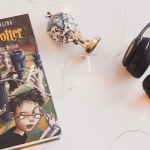J.K. Rowling, born July 31, 1965, is one of today’s most iconic authors. She showed a passion for storytelling from an early age and dreamed of creating magical worlds. Her work has reached millions, with over 500 million books sold worldwide, making her a household name. While best known for the Harry Potter series, her writing also delves into friendship, courage, and identity themes. Here, we explore the top 10 books that have shaped her remarkable career.
Top 10 Books by J.K. Rowling
1. Harry Potter and the Philosopher’s Stone
Published in 1997, Harry Potter and the Philosopher’s Stone is where J.K. Rowling’s magical journey began. The story introduces us to Harry Potter, a young orphan mistreated by his aunt and uncle, the Dursleys. His world changes dramatically when he learns he’s a wizard and is invited to attend Hogwarts School of Witchcraft and Wizardry. Through Rowling’s detailed world-building, readers explore iconic locations like Diagon Alley and Hogwarts, meeting memorable characters such as Hermione Granger, Ron Weasley, and Hagrid. The book sets the stage for a tale of wonder, danger, and self-discovery.
The novel delves into themes of friendship, bravery, and the importance of self-worth. Harry learns about his parents’ sacrifice and his unique connection to the dark wizard Voldemort. The climax centers around Harry’s courage as he faces the Philosopher’s Stone’s guardian challenges and Voldemort’s lingering presence. Rowling’s narrative style blends humor, suspense, and emotion, making it accessible to readers of all ages. It’s the perfect introduction to a series that would go on to captivate the world.
2. Harry Potter and the Chamber of Secrets
In the sequel, Harry Potter and the Chamber of Secrets, Rowling immerses readers further into the magical mysteries of Hogwarts. The plot revolves around the legend of a hidden chamber said to house a deadly monster. Strange occurrences, including students being petrified, hint at the chamber’s opening, and suspicion falls on Harry himself. As Harry unravels the mystery, he discovers Tom Riddle’s diary, which is key to understanding the past and Voldemort’s early years. The story showcases Harry’s growing courage as he confronts danger and uncovers the truth.
The book explores themes of prejudice and the consequences of fear and ignorance. Harry learns about blood purity and its dark implications in the wizarding world. The climax sees Harry facing the monstrous Basilisk and destroying Riddle’s diary, a piece of Voldemort’s soul. Rowling’s writing combines suspenseful twists with moments of levity and heart, making this installment a standout. The Chamber of Secrets deepens the series’ lore while emphasizing bravery and standing up for what’s right.
3. Harry Potter and the Prisoner of Azkaban
Widely considered a fan favorite, Harry Potter and the Prisoner of Azkaban introduces a darker, more mature tone to the series. The story centers on Sirius Black, an escaped prisoner believed to be after Harry. As the plot unfolds, Harry learns that Sirius was his father’s best friend and is falsely accused of betraying Harry’s parents to Voldemort. The book introduces the concept of Dementors, creatures that feed on fear, highlighting Harry’s emotional struggles. The story explores themes of loyalty, redemption, and the complexities of human relationships.
Rowling’s storytelling shines as she incorporates time travel, enriching the narrative without overwhelming it. Hermione’s Time-Turner becomes crucial to saving Sirius and Buckbeak, a hippogriff unjustly sentenced to death. The novel’s pacing and character development are exceptional, with Harry forming a deeper connection to his parents’ past. The exploration of justice and forgiveness leaves a lasting impact. Prisoner of Azkaban is a turning point in the series, blending intricate plotting with profound emotional depth.
4. Harry Potter and the Goblet of Fire
Harry Potter and the Goblet of Fire marks a significant tonal shift as the series grows darker and more complex. The story begins with the Triwizard Tournament, an inter-school magical competition that unexpectedly includes Harry as a contestant. As Harry navigates dangerous tasks, the narrative explores trust, betrayal, and resilience themes. The climactic finale reveals Voldemort’s full return, setting the stage for an intense conflict. Rowling masterfully balances thrilling action with character-driven storytelling.
The book delves into themes of friendship and moral courage as Harry, Ron, and Hermione face challenges that test their bond. The Triwizard Tournament also introduces characters like Cedric Diggory, Fleur Delacour, and Viktor Krum, enriching the wizarding world. The shocking conclusion, where Cedric is killed, marks a loss of innocence for Harry and the series itself. Rowling’s ability to handle darker themes while maintaining the essence of adventure is evident. Goblet of Fire is a monumental installment that bridges the gap between childhood wonder and the harsh realities of war.
5. Harry Potter and the Order of the Phoenix
Harry faces the dual challenges of growing up and fighting a rising tide of darkness in Harry Potter and the Order of the Phoenix. The story explores his struggles with anger, isolation, and the weight of his destiny. The Ministry of Magic’s refusal to acknowledge Voldemort’s return creates a tense political backdrop, with Harry and his friends forming Dumbledore’s Army to prepare for the inevitable battle. Rowling captures the turbulence of adolescence, making Harry’s journey deeply relatable. The book’s layered narrative highlights the personal and collective cost of fighting for what’s right.
The introduction of Dolores Umbridge, the Ministry-appointed Defense Against the Dark Arts professor, adds a chilling layer of institutional corruption. Her oppressive regime at Hogwarts underscores the dangers of complacency and blind obedience. The climax in the Department of Mysteries delivers intense action and devastating losses, including Sirius Black’s death. Themes of grief, resistance, and resilience are woven seamlessly into the story. Order of the Phoenix is one of Rowling’s most emotionally charged and thought-provoking works.
6. Harry Potter and the Half-Blood Prince
In Harry Potter and the Half-Blood Prince, Harry delves deeper into Voldemort’s past under Dumbledore’s mentorship. Through memories collected in the Pensieve, Harry learns about Tom Riddle’s transformation into the dark wizard Voldemort and his obsession with creating Horcruxes. This installment takes a darker tone, exploring themes of ambition, morality, and the cost of power. Simultaneously, Draco Malfoy’s arc reveals his inner conflict as he struggles with a deadly mission forced upon him by Voldemort. The story’s pacing balances moments of levity, such as the budding romance between Harry and Ginny, with the grim undertones of an impending war.
The novel is also notable for exploring Snape’s enigmatic character, culminating in his shocking act of killing Dumbledore. This act leaves readers questioning his true loyalties while setting up the series’ dramatic conclusion. The tragic ending on the Astronomy Tower is one of the series’ most poignant moments, marking a loss of innocence for Harry and his friends. Rowling’s writing in this book masterfully interweaves character development with the unraveling mystery of Voldemort’s immortality. Half-Blood Prince is a pivotal and emotional installment that deepens the series’ narrative complexity.
7. Harry Potter and the Deathly Hallows
The final book in the Harry Potter and the Deathly Hallows series is an intense, action-packed journey that sees Harry, Ron, and Hermione leaving Hogwarts to find and destroy Voldemort’s Horcruxes. The trio faces immense challenges, from navigating treacherous terrain to enduring emotional and physical strain. As they uncover Voldemort’s plan, they also learn about the Deathly Hallows, three legendary magical artifacts that could change the course of their mission. The book explores themes of sacrifice, loyalty, and the true meaning of heroism. Rowling’s pacing is relentless, with twists and revelations that keep readers on edge.
The story’s climax, the Battle of Hogwarts, is a masterful culmination of seven books’ worth of tension and development. Major sacrifices, including the deaths of beloved characters like Fred Weasley and Severus Snape, drive home the high stakes of this war. Ultimately, Harry’s selfless act of walking to his death and the final confrontation with Voldemort underscores the series’ central themes of love and redemption. Rowling ties up loose ends beautifully, providing a satisfying conclusion to her epic tale. Deathly Hallows is a fitting and powerful finale that cements the series as a timeless masterpiece.
8. Fantastic Beasts and Where to Find Them
Fantastic Beasts and Where to Find Them offers a whimsical expansion of the wizarding world first introduced as a fictional textbook by Hogwarts students. The book vividly catalogs magical creatures, showcasing Rowling’s remarkable imagination. Each entry blends humor, scientific precision, and creativity, making it an engaging read for fans eager to learn more about the creatures that inhabit her magical universe. While it lacks a traditional narrative, the book offers insight into the care and study of magical creatures. It’s a testament to Rowling’s ability to breathe life into even the smallest corners of her world.
The adaptation into a film series introduced new characters and settings, focusing on Newt Scamander, the book’s fictional author. This prequel explores the wizarding world of the 1920s, delving into themes of acceptance, environmentalism, and the dangers of prejudice. The films expand upon the lore of the Harry Potter series, making Fantastic Beasts a vital part of the franchise’s broader tapestry. Rowling’s ability to craft a richly detailed backstory highlights her unparalleled skill as a world-builder. For fans of magical creatures and Rowling’s imagination, this book is an enchanting addition to her bibliography.
9. The Casual Vacancy
J.K. Rowling’s foray into adult fiction with The Casual Vacancy reveals her versatility as a writer. Set in the quaint yet troubled English town of Pagford, the story begins with the sudden death of councilor Barry Fairbrother, creating a power vacuum within the community. What follows is an unflinching exploration of class divisions, politics, and interpersonal conflicts. Rowling deftly navigates the intricacies of small-town life, uncovering hidden secrets and simmering tensions. The novel’s raw portrayal of human flaws and societal issues starkly contrasts her fantasy works, showcasing her ability to tackle real-world themes.
The characters in The Casual Vacancy are richly developed, each grappling with their own struggles, from addiction and abuse to ambition and moral dilemmas. Rowling’s writing paints a vivid, often uncomfortable picture of modern society, forcing readers to confront poverty, privilege, and systemic inequality. While it lacks the escapism of her magical worlds, the book’s realism and depth resonate on a profound level. Its layered narrative demonstrates Rowling’s ability to craft compelling stories in any genre. The Casual Vacancy is a bold and thought-provoking departure from her previous works.
10. The Ickabog
The Ickabog is a charming fairy tale highlighting Rowling’s storytelling prowess for younger readers. Set in the land of Cornucopia, a once-prosperous kingdom, the story follows the rise of a mythical creature called the Ickabog and the corruption that spreads through the realm—the narrative weaves together themes of truth, justice, and standing up for one’s beliefs. Written during the COVID-19 pandemic, the book served as a creative escape for readers and showcased Rowling’s commitment to fostering imagination in children. The illustrations created by young readers add a delightful personal touch to the book.
At its heart, The Ickabog is a tale about resilience and hope in adversity. The story’s timeless quality and moral lessons make it a valuable addition to the canon of modern fairy tales. Rowling’s ability to balance lighthearted humor with meaningful commentary ensures the book resonates with readers of all ages. The whimsical characters and engaging plot offer a glimpse into her talent for crafting enchanting worlds beyond the Harry Potter series. The Ickabog is a heartwarming reminder of the power of storytelling to inspire and unite.
J.K. Rowling’s evolution as an author is extraordinary. Starting as an aspiring writer, she became a global icon, touching millions with her stories. Her works resonate across ages and genres, from the enchanting Harry Potter series to the insightful The Casual Vacancy. They delve into themes of friendship, bravery, and human complexity.
Whether cheering for Harry or reflecting on social issues in Pagford, her words inspire and provoke thought. Despite ongoing debates about an author’s separation from their work, Rowling’s literary contributions are undeniable, igniting imaginations and fostering a lasting cultural legacy.



